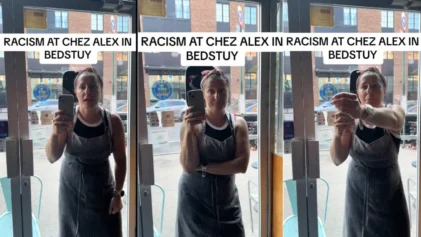High levels of radioactive waste have been detected at a predominately Black elementary in Missouri.
A recent report issued by an independent chemical data company found radioactive levels that exceed the U.S. Department of Environmental Protection Agency threshold to be “protective of human health” at Jana Elementary School.
The report shows the soil at the Florissant, Missouri, school was 22 times the expected level on the kindergarten playground.

U.S. News data show 82.5 percent of the school’s more than 400 students are Black.
“I was heartbroken,” said Ashley Bernaugh, president of the Jana parent-teacher association, who has a son at the school. “It sounds so cliché, but it takes your breath from you.”
The school, outside of St. Louis, Missouri, is miles away from a World War II-era factory that processed uranium for nuclear bombs. Residents are concerned the contaminants could be behind illnesses, diseases and deaths in the area. Jana Elementary is bordered by two sides of Coldwater Creek which has been tainted by radioactive waste since the 1940s.
“The wastes in the creek come from residues of the Manhattan Engineering District Project. Many properties in this area get tested with some regularity,” Marco Kaltofen, the report’s author told CNN. “Unfortunately, when Coldwater Creek floods its banks, some of that radioactive material is deposited on neighboring land, such as the school.”
U.S. Army Corps of Engineers tested the area near Coldwater Creek in the spring of 2018 after years of complaints by residents about a cancer cluster among residents in their 30s and 40s. A 2013 Missouri Department of Health and Senior Services Inquiry Program found “statistically significantly higher” cases of leukemia compared to other parts of the state as well as breast, colon, prostate, kidney and bladder cancers.
Christen Commuso of the Missouri Coalition for the Environment obtained the results of the Army Corps’ study through a records request and presented the information to the school district in June.
“We have found spotty areas of contamination as we sample down the creek, and it’s all been below ground surface,” the Army Corps’ report said. “Everything we have found up to this point doesn’t pose an immediate risk … people aren’t being exposed during normal activities.”
However, the Army Corps’ study did not include the school grounds. Parents pleaded with the school board for more testing in July.
Boston Chemical Data Corp. evaluators took 32 soil, dust and plant samples from throughout the school in August, including the ventilation system. Along with the stark amount of radiative lead in the soil on the school playground, the basketball court’s lead contents were 12 times the expected level. They also found radioactive waste in dust in the elementary school’s kitchen, gym and boiler room, the Oct. 10 report shows.

Lead exposure, even at low levels, is harmful to children, according to the Centers for Disease Control and Prevention. It could damage the brain and nervous system and slow growth and development.
“No safe blood lead level in children has been identified,” the CDC states.
The Boston Chemical Data Corp. study also found high levels of polonium-210. If large quantities of the radioactive material “are inhaled or consumed in a fairly short period of time,” it can cause “radiation exposure of internal organs, which can result in serious medical symptoms or death,” the CDC states.
Among other toxins, the report also found radium, which is a result of uranium decay. According to the EPA, chronic exposure to high levels of radium can result in an increased incidence of bone, liver, or breast cancer.
Parents and environmental activists are calling on the Boston Chemical Data Corp. to do more tests and for the school system to clean up the toxins that have been in the “community for over 80 years.”
“There is no safe level of bomb waste for children,” said Karen Nickel, co-founder of the environmental activist group Just Moms STL.
Hazelwood School District officials plan to hold a meeting Tuesday to discuss the study’s findings.
“Safety is always our top priority, and we are actively discussing the implications of the findings. The Board of Education will be consulting with attorneys and experts in this area of testing to determine next steps,” the district said in a statement.


